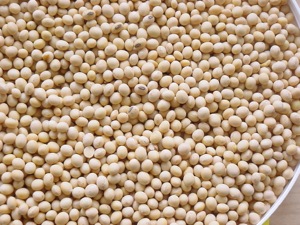In the rush to make tires more environmentally friendly (or, if you want to be cynical, less environmentally unfriendly), few consider the plight of the designers of ultra-high performance tires. 
These brilliant engineers are charged with accomplishing contradictory tasks. They must retain or, ideally, expand the traction UHP buyers seek, while reducing rolling resistance, limiting the use of petroleum products and toxic chemicals, and cutting the tire’s weight – while keeping retail price the same.
It’s like a football coach telling a player: “Make more tackles, but don’t hit the other players hard. Also, sweat less while running faster, and give us a rebate on your salary. And stop ripping up the grass and wearing out your uniform.”
All the tire companies I contacted were closed-mouth about this topic. None of the tire companies returned our emails. The public relations representative for one company did, but only to tell us that they wouldn’t tell us anything.
From a journalist’s view, that means I hit the target in the center of the X. From a reader’s standpoint, that means all I can do is speculate and use the little information published on tiremaker websites. I guess they don’t want to help you help consumers.
As journalists aren’t really allowed to speculate, my guess is that tire companies are having a devil of a time retaining UHP grip while meeting “environmental goals” and maintaining costs. It also means the car companies are probably flogging tiremakers to gain an additional 0.25 mile per gallon for their hot new supercar.
Low rolling resistance is the hallmark of eco-friendly tires. Traditionally, improving rolling resistance a little tiny bit REALLY hurts traction, especially damp traction. I’ve seen wet stopping distances grow by 30 or more feet between an otherwise equal low rolling resistance tire and one made conventionally. Some makers have tried to break the trade-off by introducing silica to the recipe. If I’m not mistaken, though, this increases cost and introduces sand fragments into the air.
Testing For LRR
A word about low rolling resistance. Some tiremakers claim as much as an 8% improvement in fuel mileage compared to a) previous models, b) other of their tire lines, or c) a competitor’s product that could be considered head-to-head competition…or not. Until there are realistic, common test requirements, none of these purported improvements can be proven or agreed.
Regardless, when it comes to these claims, a tiremaker is going to have to open up and show a real-world difference. While working for a tire company, I attempted to set up a real-world demonstration to illustrate low rolling resistance. I tried coast downs of several descriptions and a Soap Box Derby-style start. Nothing was repeatable, much less robust enough to show outsiders.
The coast downs appeared to be more a test of the sensitivity of the GPS-based speedometer. The gravity attempt appeared to be impacted by the wind. So the results were random. Sometimes the low rolling resistance tire coasted further, sometimes the high rolling resistance tire coasted further.
Next Requirement
Next, the UHP designers must reduce weight. One of the easiest ways to improve traction of any tire is to fit it into the upper left corner of the Tire and Rim Association dimensional windows: That is, make it as tall and wide as is allowed while still being able to retain its nominal size. That option no longer is available. A lighter tire improves rolling resistance and saving a quarter ounce here and a quarter ounce there might do something. But I don’t think so.
One tiremaker has an eco tire with a “reduced hysteresis” sidewall. I keep getting hysteresis backward, but I know that hysteresis like a Superball offers less grip and better rolling resistance, while hysteresis like Silly Putty offers more grip and worse rolling resistance. Regardless, that doesn’t seem to be in the UHP tire designer’s favor.
Eliminating aromatic oils has long been a goal. And using less petroleum means a lower carbon footprint. But less petroleum increases the difficulty of making any tire.
Companies are trying everything from oil from orange peels to sunflower oil to dandelion oil to soybean oil – and I’m sure further research efforts will uncover other potential resources.
If anyone’s had a true groundbreaking breakthrough, they’re not talking about it. In fairness, it appears that everything is being looked at, considered, fiddled with and added to the potential mix.
Not trying to be a fuddy-duddy here, but tires have been made the way they are for a very good reason, and tiremakers (and their lawyers) will be very deliberate in testing and evaluating new or replacement compounds, chemicals or processes to produce any tire – let alone rush to the eco bandwagon.
Designers are even trying to increase the use of natural rubber, because it is a renewable resource. Of course, if any of these renewables proves to be a miracle cure, we may find ourselves literally changing the landscape to grow more of whatever the cure is – and damaging our environment in other ways as a result.
Dear UHP tire designers, I don’t envy your task.













